Amid the pandemic that gripped the world, Singaporean fashion photographer Shavonne Wong saw an opportunity to carve out a new career for herself in the rapidly-evolving NFT space. A fashion photographer by trade, she turned her hand to 3D and crypto to create an incredible NFT collection that sold out fast, consequently raising her profile in this exciting, new industry.
We interviewed Shavonne to learn how she made the shift into NFTs with her 3D virtual models, what her creative process involves, and where she thinks NFTs are headed in the future. We picked up plenty of tips and insights for aspiring NFT artists along the way!
Q: Can you tell us about your background?
I’ve been a fashion and advertising photographer for more than ten years. It’s been an incredible career. I got to be part of Asia’s Next Top Model as a guest photographer; I got to photograph Billy Porter; I got to work for Vogue, Sephora, and Lancôme. At the end of 2019, I’d reached a peak; I’d just got into Forbes 30 Under 30… and then Covid came. So that ruined the momentum a little bit!
Q: Do you still do photography now alongside your NFT work?
Because of my experience, I still work in photography. If a client can afford my day rate, I will do a shoot. I’m not above money! Previously, however, I would do all the editing. But now, I say to the clients that hire me that I’ll go to the shoot, but after that, I’ll pass the photos to someone else for editing. So I still do it, but a lot less than before because my focus has definitely shifted quite strongly into 3D and NFTs.
Q: What catapulted your transition into NFTs – how did you get started?
It was really cool timing. In 2020, Covid hit, and Singapore went into lockdown. Photoshoots were no longer allowed as they were no longer essential. I stayed at home for the first two months and played computer games! And then I realised that this was not going away. So I had to work out what I was going to do.
Before Covid, I think my interest in photography was waning a bit; clients were starting to have higher expectations but less budget. So I asked myself what I really wanted to do and how I could ensure that I have a future career going forward. 3D technology has always been exciting to me, and I figured that if I couldn’t photograph real models, I would just make my own.
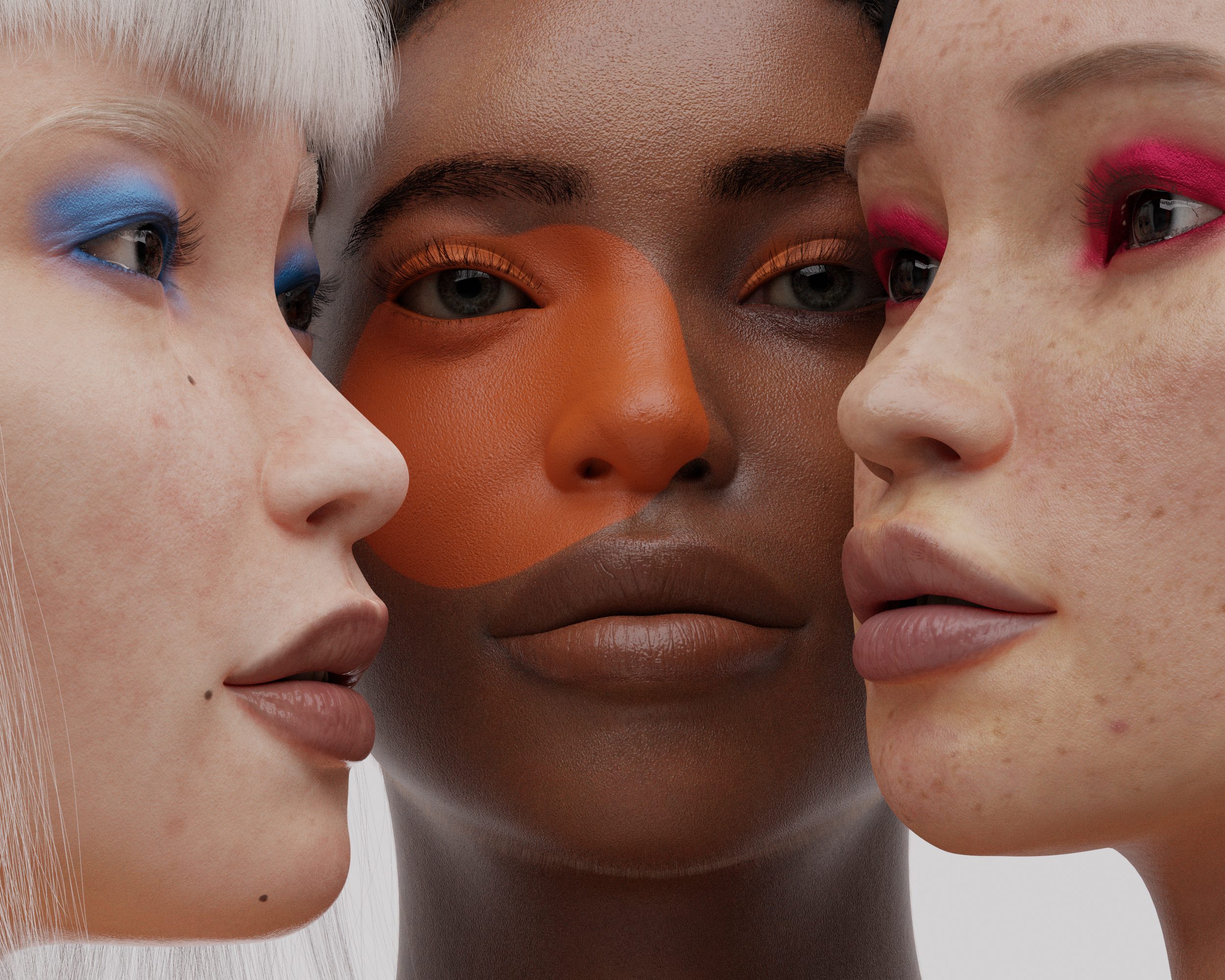
‘Kin I’ © Shavonne Wong
I spent the rest of 2020 learning 3D and making virtual humans. That was all I did every single day; just wake up, learn 3D, work, eat and then go to bed. It was tutorials after tutorials and practising after practising. When I was doing this, it was always towards the aim of going to commercial clients and telling them about all my virtual models they could use for future advertising campaigns. There are just more things you can do with virtual models; you can put them in space, they don’t need oxygen; they don’t need gravity!
I was going to start approaching clients, but in early 2021, my husband told me about NFTs. With the work I was doing with my virtual models, I was already creating a portfolio, so NFTs felt like a very interesting way of progressing what I was already doing. I thought this could be an additional revenue stream, so why not try it out? So I just kind of dived in!
Q: Did you have any prior experience of 3D, or did you learn your new craft from scratch?
When I was in polytechnic, they had a few subjects on 3D, so I had experienced it before. Of course, by 2021, when I was trying to go into 3D, all the knowledge I’d learnt decades ago was totally different because the software has all changed, and everything has been improved on!
But I remembered that I’d enjoyed 3D and the basic ideas of it. I knew that when you create a character, you need to model it, and then you need to rig it for bones. Then you need to animate it, and you need texture and lighting. So I remembered the foundational blocks to achieve the end result, but not all the nitty-gritty details on how to create these blocks. That, I had to learn.
Q: How did you approach brands about your virtual models?
When I first started to do my virtual models [with Gen V Agency], I would approach brands and pitch my models for their advertising campaigns. But this also meant creating their outfits in 3D. The way this is done is very similar to real life, in terms of cutting and sewing. But I didn’t have training in this.
When I tried to make an outfit, I had to guess how to do certain things. For example, if it was too big, I didn’t know where to cut to make it flattering. So I didn’t actually like making clothes. The process was very easy if a forward-thinking client already had a 3D version of the outfit. But for clients that didn’t, I had to consider what kind of outfits they had because if they had very intricate cuttings that are complicated to make, then that might be beyond my skill set. And I might then have to hire someone who specialises in making clothes and put them on the models.
It was hard to execute because many clients I work with are used to traditional photoshoots where you just turn up, put an outfit and earrings on a model, and that’s that. With my virtual models, I have to make the earrings before putting them on her.
There were many things my clients were struggling to understand, like what I required from them and how I charged for certain things. From my end, it was a challenge explaining these things in an easy way. I was still struggling in this area when I came across NFTs, and I thought they seemed much easier!
Q: So, are NFTs now your main focus?
Yes. The virtual models I’d created for Gen V were the base models I’m now using to create my NFTs. I don’t need to focus on Gen V from a financial perspective as of now; I’m busy enough with creating my models, improving my craft and trying to create more artworks.
Q: What does a typical day look like for you?
I roll out of bed and have a nice breakfast/lunch with my husband. I take my time to have a meal and chat with him. I water my plants and feed the fish. And then I go to my room, and the workday starts around 1.30–2pm. After that, I sit at my computer, and I don’t leave until dinner. I go back and then don’t leave until around 4am. I’m a night owl!
Q: Tell us about your Love is Love NFT collection
Love is Love is a generative art experiment project. So last year, PFP – profile picture projects – started coming out. These are projects where people buy and use the image as their profile picture or avatar to represent who they are. All these collectable projects usually come with a ‘utilities membership’, and they have a roadmap for the future. So it’s almost like a startup where people invest to be part of this membership club in the hope that it keeps growing.
Then there are the collectable projects where artists just want to create and make pretty pictures and sell them as their art. These two buckets are very different. For me, blockchain presented an opportunity to experiment with my art. My canvas is digital; the 3D medium. But I thought that actually, the blockchain itself could be a form of the medium, where I get to experiment and play with how I want my art to be disseminated.
I wanted to do a 500-piece project, and I wanted it to be generative. I played around with my models and put two of them in a position facing each other where they were about to kiss. I thought this looked cool but decided to try swapping one of the models for another. I realised then that I could do a generative art project with just this idea.
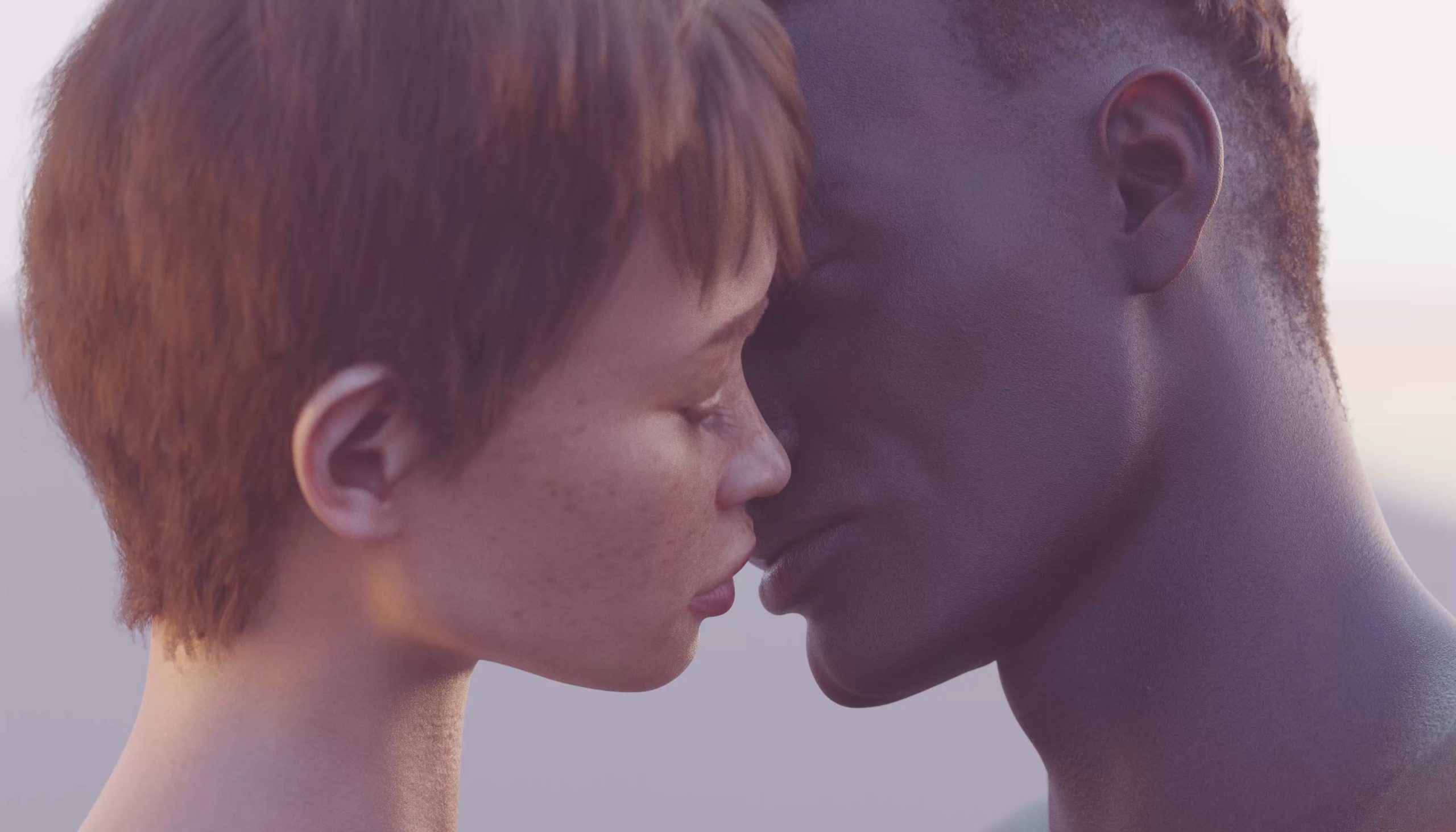
‘The Kiss’ © Shavonne Wong
I believe that love is love, that people should be with whoever they want, and there should be no social reason why a person shouldn’t be with somebody else. Sexuality, race, body size, whatever, love is love. So that was the general concept behind the project.
With many of these collectable projects, you just get a random result. But when I buy art, I like the pieces that I see myself in. I had all these generative models of different body shapes, ethnicity, skin tone, hair colour, features, etc. And I wanted buyers to be able to influence their end result – by choosing from two variables – gender and sexuality. So if the buyer chose ‘female’ and ‘gay’, the result would be a female/female combination. It would still be random in a sense; for example, if someone chose ‘male’, it could be any type of body shape and skin tone. In real life, you can end up with someone who isn’t exactly what you had in mind. You don’t really choose ‘your person’, the one who you end up loving.
My developers created a website where buyers could mint their pieces. There was the option to choose gender and sexuality before minting. And they got their end result from there.
Q: Tell us more about how you produce your NFT art.
The actual concept phase takes the most time; putting the model into the right position, lighting it, compositing it. It’s straightforward for me because I’ve been doing this for ten years in photography. That’s where 3D and photography are very seamless – I get to light, pose and photograph my model the same way as what I would have done in real photography. Except now in 3D, I experiment more, like moving makeup across the face or putting models in particular spaces. How I achieve the end result is very much influenced by my photography career.
Q: How do you decide how you want your models to look?
In my photography, there have always been certain looks that I’m drawn to. When I create my models, I’m influenced by what I love to photograph. I enjoy shooting people with a range of skin tones because I feel like their end results are just more fun and exciting than bland photos where different people look the same.
So I like having diversity in my photography portfolio. Being able to create someone of different ethnicity and also respect their race and culture was a good challenge for my skillset. So when I was creating my African-American lady, I had to figure out her hair because it was so different! There are all these different hair types and how baby hairs are dealt with. I do my research to make sure that if I’m going to create a model of a black person, it will look accurate. I’m always improving! I’ve actually taken on more classes to learn better how to improve my sculpting to make them even more realistic.
Q: What platforms do you use to mint and showcase your NFTs?
I’ve used Foundation and SuperRare. And now there’s Manifold which allows artists to do their own smart contracts. So I’ve been minting from that. I’ve been using OpenSea and also my own website as a storefront [for Manifold] allowing me to sell off-platform totally.
Q: How do you work out how to price your NFTs?
At the start, it was a bit like ‘pluck a number’! I did do some market research – when I first entered the scene with Foundation, I looked at what was being sold for what price. Then, knowing my skill set and that I wasn’t entering as a totally new artist, I tried to slot myself into where I thought best.
I wondered whether I was pricing too high or too low, but I just went with it and was encouraged because I sold my art pretty fast. There are a lot of stories of people who struggle to sell, but when I minted my first piece on Foundation, I made money within hours. So that was nice!
Q: What was the first NFT that you sold?
It’s called ‘Lilium in Pearls’, a series showcasing a black girl wearing pearls, using the first virtual model I created. In a sense, I was creating a beauty shot, something I’ve done in photography – a close up of someone’s face, she’s wearing an earring – like a beauty/jewellery commercial.
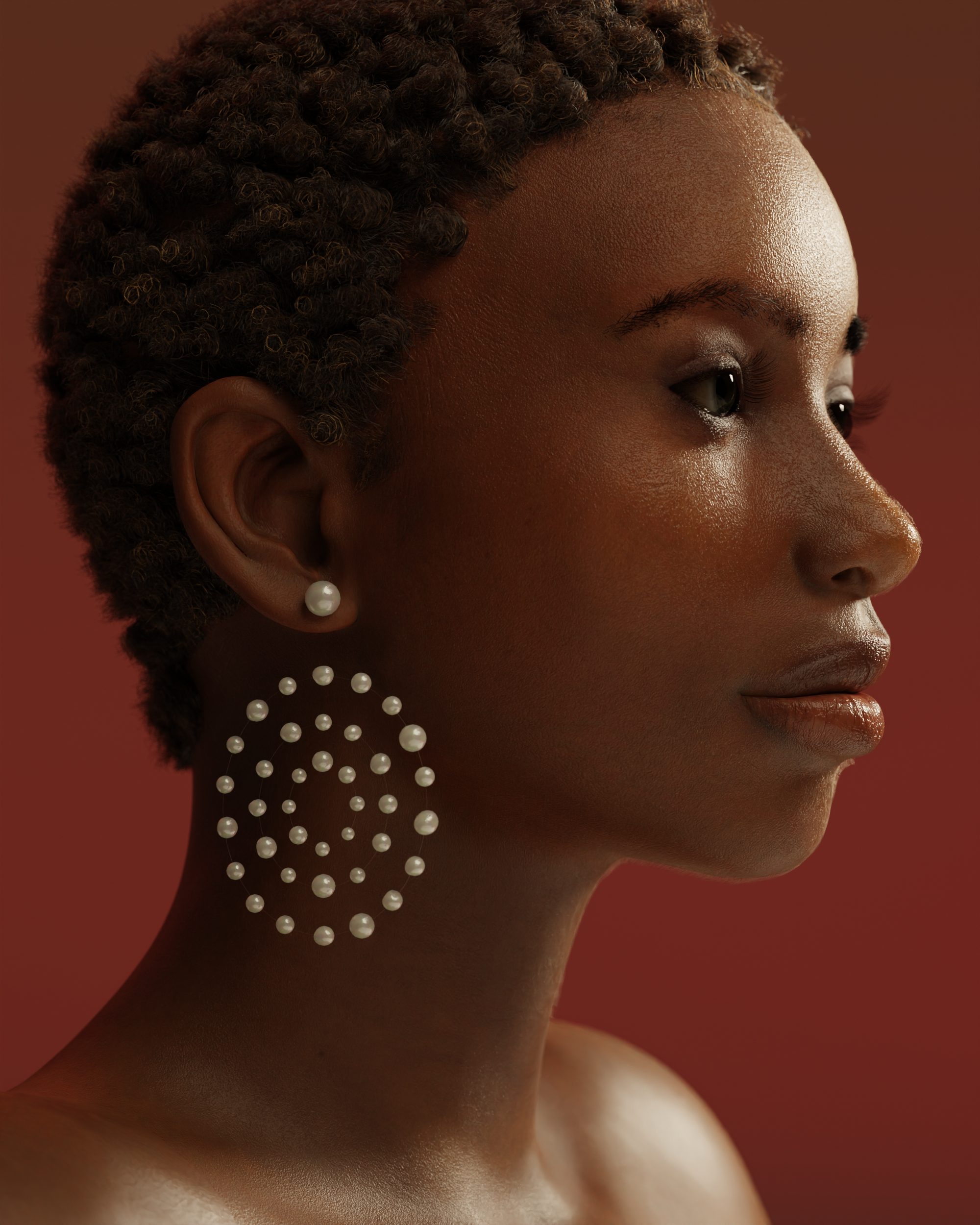
‘Lilium in Pearls I’ © Shavonne Wong
I had a strong intention that whatever I created with my virtual models for NFTs was something I would have loved to do in real life but couldn’t. So in this very first one, the model is wearing an all-pearl earring that rotates, with no connecting wire. And the second one involved a string of pearls coming out of the model’s ear and floating down to her chin. I was going for something surreal that I couldn’t do in real life.
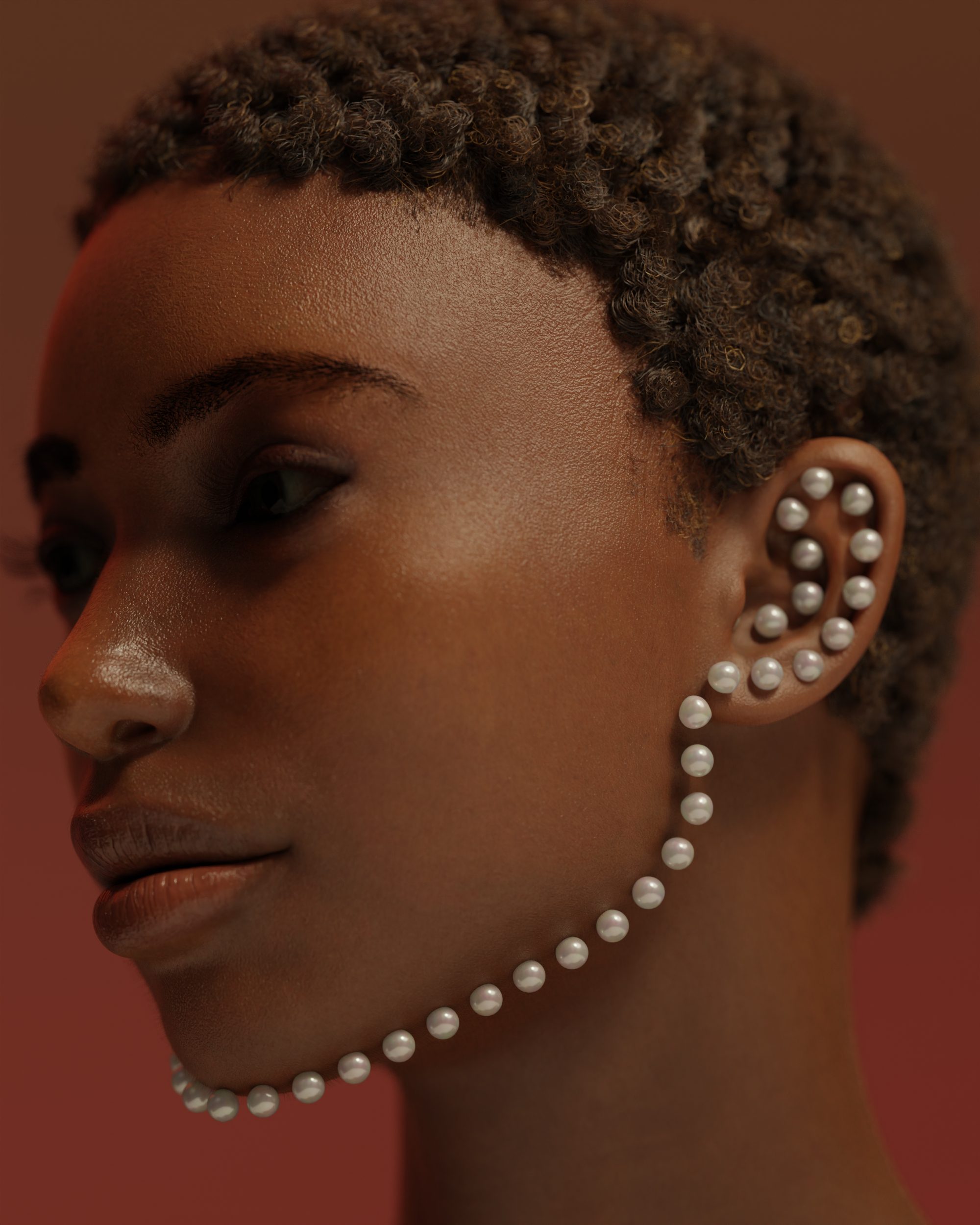
‘Lilium in Pearls III’ © Shavonne Wong
Q: Have any celebrities bought your NFT art?
Idris Elba bought three pieces from my Love is Love collection. He’s my biggest celebrity – it’s hard to beat Idris Elba!
Q: What’s your proudest achievement so far in your NFT venture?
It’s only been a year, but I’ve been able to do so many things. In my photography career, I’ve always wanted to shoot for a book cover. And in the ten years I spent doing photography, I never landed one. I got into NFTs, and after five or six months, I got the opportunity to work on a Vogue cover! So that was incredible. I had the opportunity to do something that was part of Sotheby’s and collaborate with the World Economic Forum. Idris Elba bought my art! And later this year, my art will be shown at the Venice Biennale, which is pretty epic.
Q: Tell us about the NFT Asia community.
NFT Asia is where Asians interested in NFTs hang out and talk about them. We have a Twitter account at @NFTAsiaOfficial, and there we display the Discord link where people can join. Discord is where we have our conversations. We have more than 3,700 members in Discord and over 13K followers on Twitter.
The community came about early last year when I started getting into NFTs. I was hanging out at Clubhouse and Twitter, and I realised that there were very few Asians [in the NFT community]. I then connected with Clara, an arts writer and curator, writing an article on NFTs at the time. She told me she had a Discord group with around ten people from Singapore who were also interested in NFTs. I joined it, and after a while, I suggested opening the group up to make it public. Because there is a need for Asians to connect as much activity and conversations happen outside of the Asia time zone! So we opened it up, and it just exploded. People started joining from everywhere.
We asked ourselves, how can we help this community – help them get seen and get more exposure. We were very aware that some members were coming from countries where the currency is suffering, so they’re at a disadvantage with what they can afford to risk. Then there are language barriers. Tutorials on how to get into crypto and NFTs are often in English, but for some people, their English isn’t good. Then there’s the question of how to showcase your art. As a person who came from the commercial world, talking about art itself is still awkward and hard, but I can speak English. For a lot of our members, they can’t. It’s more awkward and difficult for them to share why they do what they do.
I noticed that many Asians suffer because we dare not raise our hands or make a request; we’re not very loud people in general. So in Discord, we have ‘Pitch Practice’ to help people talk about their art. It’s a private room where members pitch to us, and then we talk about how they can improve – like stopping saying sorry every five seconds! Lots of people find it helpful. Clara is able to share lots of practical and helpful information about how to write good descriptions or a bio. And we also do game nights so the community can have fun.
Right now, we’re trying to create a more physical presence in the world. At Art Dubai, we’ve been invited to have a booth. Between us, we have lots of conversations around what we should do as NFT Asia, as leaders of this community. And because we speak English, it’s almost our duty to be part of the conversation. Because art has been around for centuries, and it’s always had a focus on the western perspective. The NFT scene is so new; it’s still booming, the culture is still being built, so it’s imperative for us to be part of the conversation to make sure that diversity exists and that great art from Asia also exists. We want people to pay attention to all these incredibly talented artists who otherwise would not showcase their art in the world.
Q: What do you think the future looks like for NFTs?
As artists and creatives, we’ve been very lucky that NFTs have boomed in art because they weren’t created for art to begin with. I’m very interested in seeing NFTs grow in fashion, music, and the idea of membership utilities – there are so many usages for NFTs. Recently, I saw that somebody was trying to figure out how to mint their time. Just like how you can buy a consultation/time slot with someone, e.g., $60 for an hour, but instead of that, trying to move their time to the blockchain. People could even bid for time slots and open the price up to the market to have a time slot with someone.
There are so many exciting and innovative ways to change how the world has been functioning for so many years. Because NFTs are so new, there are many opportunities to be the first person to do something. NFT blockchain games will also be very interesting in the future.
Q: What direction will you go in next?
I have a very vague idea of what I want to do. With NFTs, the space just moves so quickly, it’s hard to plan too far in the future. I want to continue doing more art – art that’s experimental, more innovative, to do stuff I’ve never done before. I always want to challenge myself to do something different and very new on the scene.
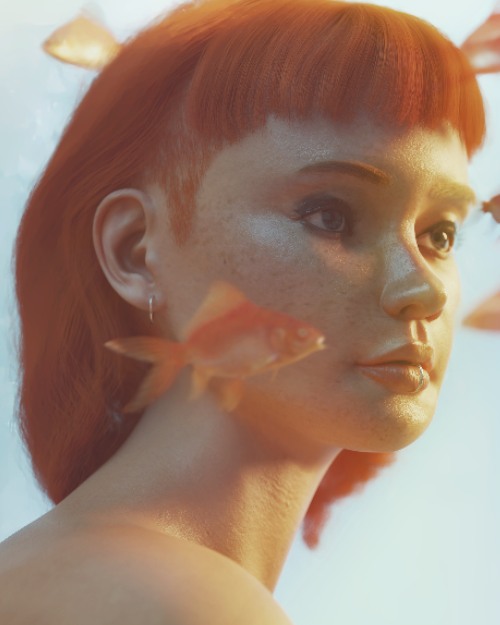
‘Goldfish’ © Shavonne Wong
Q: Do you have any advice for aspiring NFT artists?
Just do it! I know so many people who are interested, they’re thinking about it, they’ve researched it and then months later, they’re still at the same stage. There’s always something to learn and research – there’s never a perfect time to start. The best way to learn is by doing.
I learned during my years as a freelance creative that I had to market myself. It wasn’t a case of if ‘I do good work, people will come’. So moving into NFTs, I knew I could create good art, but I also knew that nobody would know about it if they weren’t aware that I existed. So I had to consider how to market myself, deal with branding myself, and deal with being on social – being everywhere. You can’t take this part lightly.
If you look at traditional art galleries, they take 30–40% commission, and then in the NFT space, people are talking about the big percentage the middleman takes. But they forget that these ‘galleries’ do the marketing and branding, support with networking and talking to clients – all things that lots of NFT artists complain about doing! So if you don’t like the middleman’s cut, you’ll have to do all this yourself. You can’t just think that if you do good art, people will come. You have to put yourself out there.
A lot of marketing and branding is about getting known and making friends in the community. Imagine that this new space is a bit like you’re in a new country and you’re going to a party. You’re alone, you don’t know anyone, and it’s awkward! You’re at the buffet table way more than you should be. If you’re Mr Charming, you might be able to talk to big groups of people at once. But if you’re not, you can just find that one person who’s also alone at the buffet table and talk to them; make a friend. Maybe this person knows another person, and you can both go and meet that other person together. So you create small groups of friendships like this. It’s easier, less stressful this way. From these small groups, you just grow and grow. And you’ll find you’re actually enjoying yourself; you’re hanging out with friends. But don’t be the person who only talks about themselves – nobody likes that sort of person. If you first show interest in someone and then they show interest in you, that’s a different story.
Try going to Discord and finding friends, like that one person who’s usually online at the same time, and talk to them. As you keep talking to more and more people, Discord will become less weird and less awkward, and suddenly, you’ll find yourself going there because it’s fun. And with friends, you naturally want to support them because you like them. Friends will reciprocate because they also like you.
To learn more about Shavonne’s NFTs, head over to her website and follow her on Instagram and Twitter.
Wondering what to read next? Check out this article on six women-led initiatives and artists making waves in NFTs and crypto. You’ll also like our founder’s view on the rise of NFTs and their impact on the creative world.
Don’t miss our upcoming Zoom Dive events on ‘Brand and community building in the world of NFTs’ and ‘Diving Deeper into NFTs: what creatives need to know.’ These are FREE to attend, but places are filling up fast! Book your place today.
*Portrait photo (top) of Shavonne Wong – © Lenne Chai